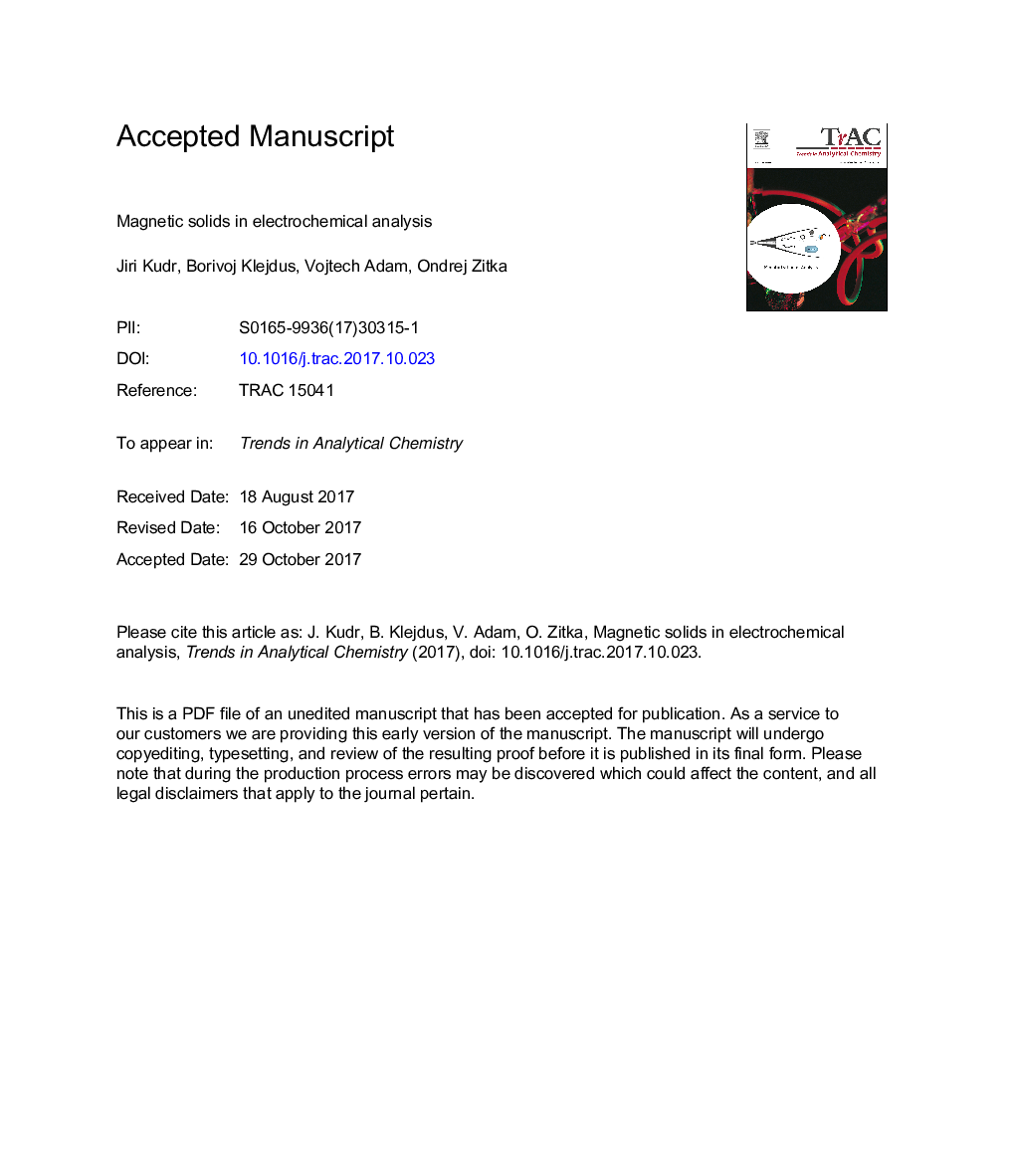| Article ID | Journal | Published Year | Pages | File Type |
|---|---|---|---|---|
| 7688007 | TrAC Trends in Analytical Chemistry | 2018 | 27 Pages |
Abstract
Magnetic solids possess several attractive properties for electrochemists as they simplify the creation of nanotechnology-based complex structures directly on electrodes or for electrode modification. In addition, affinity-based immobilization of targets on magnetic solids enables their actuation via the magnetism phenomenon and provides easy washing steps, thereby minimizing the sample matrix effect and reducing the analysis time. Furthermore, magnetic materials increase the specific surface area of electrodes; thus, various sensing platforms benefit from the enlargement of the recognition layer and enhanced target binding efficiency. Here, advances in electrochemical analysis exploiting catalytic and electrocatalytic properties of magnetic particles and molecularly imprinted polymers are discussed. In addition, nucleic acids, proteins and cell biosensors that utilize magnetic materials are reviewed here.
Keywords
GCEdsDNAEGFRSPEMIPLSVDPVHRPRCAqPCRHDAPOCDHCRMMIPSPCEssDNASWVBSADNAbovine serum albuminALPAlkaline phosphataseAnalyteGlucose oxidaseethidium bromidedeoxyribonucleic acidsingle-stranded deoxyribonucleic aciddouble-stranded deoxyribonucleic acidscreen-printed electrodeScreen-printed carbon electrodeglassy carbon electrodeMagnetic glassy carbon electrodeMRIMagnetic graphene oxideAIDSGoxEISEnzyme-linked immunosorbent assayELISAMagnetic resonance imagingRolling circle amplificationSPIONBiosensorsMagnetic particlemicro ribonucleic acidacquired immune deficiency syndromeSensorsAnalytical chemistryElectrochemical impedance spectroscopyMagnetic molecularly imprinted polymerBeadsMgOMiRNASuperparamagnetic iron oxide nanoparticlepoint-of-care deviceHybridization chain reactionpolymerase chain reactionquantitative polymerase chain reactionPCRDifferential pulse voltammetrySquare-wave voltammetryLinear sweep voltammetryHorseradish peroxidaseMolecularly imprinted polymerEpidermal growth factor receptor
Related Topics
Physical Sciences and Engineering
Chemistry
Analytical Chemistry
Authors
Jiri Kudr, Borivoj Klejdus, Vojtech Adam, Ondrej Zitka,
